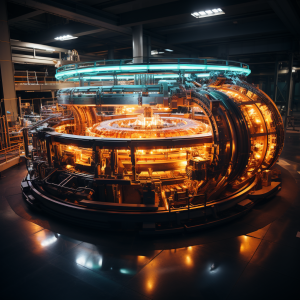
How do electrical transformers work, and what are their applications?
How Electrical Transformers Work
An electrical transformer is a device that transfers electrical energy from one circuit to another through electromagnetic induction, a principle formulated by physicist Michael Faraday in 1831. The primary purpose of a transformer is to change voltage levels, which makes the transmission of electrical power more efficient over long distances.
Construction
A transformer consists of three main components: a primary coil, a secondary coil, and a core.
Primary Coil
This is the input coil, where electrical power is initially supplied. The alternating current in the primary coil creates a continuously varying magnetic field around it.
Secondary Coil
This is the output coil. It is placed in the magnetic field of the primary coil and hence, an electromotive force (EMF) or voltage is induced in it due to Faraday’s law of electromagnetic induction.
Core
The core of a transformer is typically made of iron or steel. Its primary function is to provide a controlled path for the magnetic flux generated in the transformer, effectively amplifying the induced voltage in the secondary coil.
Operation
When an alternating current is passed through the primary coil, it creates a changing magnetic field in the core. This varying magnetic field then induces a voltage in the secondary coil. The amount of voltage induced in the secondary coil depends on the ratio of the number of turns in the primary coil (N1) to the number of turns in the secondary coil (N2), known as the turns ratio.
If the secondary coil has more turns than the primary coil (N2 > N1), the transformer is a step-up transformer. It increases voltage from the primary to the secondary side. Conversely, if the primary coil has more turns than the secondary coil (N1 > N2), the transformer is a step-down transformer. It reduces the voltage from the primary to the secondary side.
Applications of Transformers
Transformers are ubiquitous in modern society, playing an essential role in the transmission and distribution of electrical power. Some specific applications include:
Power Generation and Distribution
Transformers are crucial for transmitting electricity over long distances. High-voltage step-up transformers are used at power stations to increase the voltage, thereby reducing power loss during transmission. At the consumer end, step-down transformers are used to decrease the voltage to safer levels suitable for homes and businesses.
Electrical Devices
Many household devices use transformers. For example, chargers for laptops or cell phones have built-in transformers to reduce the 120/240V household voltage to a lower, safer voltage suitable for the device.
Audio Systems
Audio transformers are used in speakers and microphones to match impedance and to isolate different parts of the circuit, enhancing sound quality.
Radio and Television
In these devices, transformers are used for signal modulation and power supply purposes.
Medical Equipment
Transformers are used in various medical devices, such as X-ray machines and CAT scanners, to step up or step down the voltage as required by the equipment.
Industrial Applications
In industries, transformers are used in various machinery and automated systems for controlling power supply.
To summarize, transformers play an indispensable role in daily life and various industries, underpinning modern electrical systems with their ability to efficiently change voltage levels.




